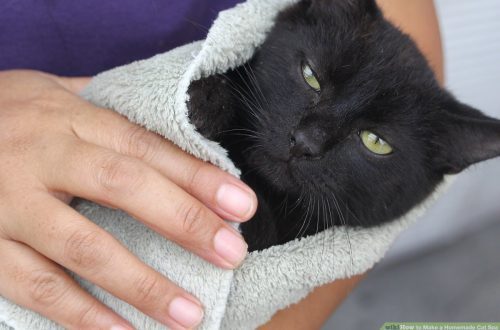
How to wash cats?
It would seem that bathing a cat is not difficult. But when you get down to business, a number of questions pop up. What temperature should the water be? What are the best bath products? Wash your pet in the bathroom or use a basin? And is it possible to bathe cats at all? About this in our article.
Washing cats: is it necessary and how often?
Cats are known all over the world for their cleanliness. But even if the pet never leaves the apartment, harmful bacteria and microbes that spread through the air settle on his fur coat every day. When licked, they enter the gastrointestinal tract of a cat and, as they accumulate, undermine immunity and lead to chronic diseases.
To prevent this from happening, the cat’s fur coat needs to have a “general cleaning” from time to time, in other words, bath days. But how often?
In this matter, everything depends on a number of factors: the characteristics of the breed, the condition and well-being of the cat, its lifestyle (whether your pet walks on the street or not). Representatives of some breeds are recommended to bathe more often (for example, sphinxes), others (for example, Persians) are bathed as they get dirty.
If your pet walks on the street, the frequency of bathing will directly depend on the degree of pollution.
On average, cats are recommended to bathe once every 1-3 weeks, because the process of renewal of dermal cells is 4 days.
Important: bathing sick and weakened pets is strictly not recommended. The same applies to animals that are stressed or in quarantine (after vaccination, illness).

How to wash a cat?
Washing cats involves the use of special products. Water alone will not remove impurities and excess sebum, and human shampoos, conditioners and soaps are not suitable for bathing a pet in terms of pH.
If you wash a cat with such products, the condition of her skin and coat will worsen. In most cases, it is the wrong products that lead to dandruff and dermatitis.
To wash your pet, you need to use professional products designed specifically for cats (quality brands: Iv San Bernard, Bio-Groom, Oster, 8 in 1). Such products are designed taking into account the characteristics of the skin and coat of cats. They delicately remove all impurities, while not drying the skin, but on the contrary, nourish it with useful elements.
At the pet store, choose a shampoo and conditioner for your cat, taking into account the characteristics of her coat. Before buying funds, carefully read the purpose and do not forget to follow the recommendations for use.
Wash preparation
Before moving on to washing, you need to prepare for it. Make sure your cat doesn’t eat before bathing. It is better if 4 hours pass from the last meal to the bath procedures.
- The optimum air temperature in the room where you will wash the cat is not lower than +22 °C.
- Suitable water temperature: + 33–35 ° С.
To bathe a cat you will need:
- special shampoo and conditioner for cats,
- spacious basin,
- towel.
Why is it better to wash cats in a basin and not in a bath? This way you reduce the risk of injury. Many cats try to escape from the bath while bathing and get injured. Washing in the pelvis eliminates the possibility of such injuries. In addition, cats are psychologically calmer to be in a basin.
If you still plan to take a bath, be sure to put a towel or mat on the bottom so that the pet can stand firmly on its paws.

Washing steps
How to wash cats according to all the rules? We learn step by step.
- We fill the basin (or bath) with water. The water level is up to the pet’s chest.
- Gently place the cat in the basin (bath).
- Gently wet the wool. Make sure that water does not get into the eyes, ears and mouth.
- We apply a special shampoo to the hair. A small amount of the product is enough, otherwise it is difficult to wash it off. Thoroughly wash the paws, tail, body and neck of the cat – always in the direction of hair growth. We do not affect the area of uXNUMXbuXNUMXbthe ears and muzzle.
It is advisable to remove dirt from the muzzle locally, without completely lathering the head. To wash off the dust, wipe it with a slightly damp sponge or hand. If you also use conditioner in addition to shampoo, follow the instructions for use.
- Rinse wool thoroughly.
- After washing, be sure to dry the cat so that it does not catch a cold. If possible, wrap her in a towel and hold her in your arms for about 10 minutes. So you will not only help her dry, but also relieve the stress received during bathing.
If the cat is not very afraid of noise, you can use a hair dryer. We make sure that there is no draft in the room where the pet will dry. Otherwise, colds cannot be avoided.
These simple rules will help make water procedures efficient and safe. Take note and try!





